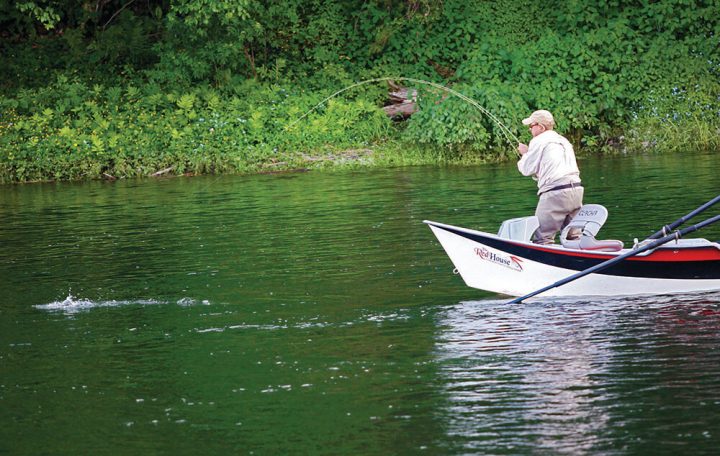
The upper end of the Delaware River, and more specifically the West Branch of the Delaware in the Catskill Mountains, is a favorite of many fly anglers in Pennsylvania and Upstate New York. It can also be a frustrating place, as it holds some very picky trout.
The river has a reputation for crystal clear water, and because it is a bottom-release tailwater, it has a very consistent temperature, which makes for great hatches and healthy fish year round. It is known for being very technical, and this is just a nice way of saying it will sometimes make you want to pull your hair out.
The first time I fished it, I was tested, even frustrated by this beautiful waterway. But besides the beautiful mountain setting and endless hatches, it is in part the challenge that drove me to go back time after time. I persisted and figured out ways of tricking the beautiful native fish. I learned lessons there that have made me a better angler. The following are some insights that will give you a leg up when you go fish the Delaware or any other technical stream.
Downstream Presentation:
Many anglers learned to cast upstream and let the fly drift down. But when fishing for spooky or educated fish, this method can sometimes leave you frustrated. It’s harder to get a good, long drift with a downstream presentation, but many times it is your best bet. Next time you’re having a hard time getting a take, cast out at about 90 degrees to the bank, and quickly give an upstream mend, this will help you keep a drag free drift for as long as possible. Keep mending as often as needed, letting the fly swing to its full downstream position.
Sweep-style hook set:
The downstream presentation should be matched with a sweep-style hook set. To use this technique, swing the rod downstream and strip the line at the same time, this will pull the line through the water, creating tension and giving a good hook set. By swinging the rod downstream, you are also pulling the hook into the corner of the fish’s mouth rather than pulling it up and away from the fish.
Slow Down Your Hook Set:
Ok, we have all done it before. It’s a tough day on the water and all of the sudden you get a strike, BAM you set the hook… and nothing. I have heard people say things like, “Next time, set the hook faster.” But most of the time the opposite is true. A good technique is to wait one second and then give the rod a gentle lift or sweep.
Match the Hatch:
Picky fish know what they want to eat. There can be significant variation in color, size and body shape in the same species of fly from region to region, and there are many subspecies for each type of fly we fish. So do your homework. I suggest hiring a local guide or at least stopping in at the local fly shop. It is good to support the community, and you can never beat local knowledge.